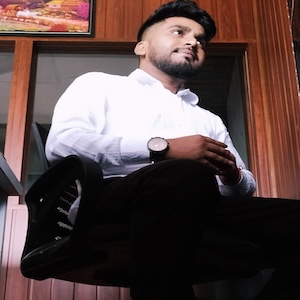Class 9 Beauty And Wellness Chapter 3 Hair Care Solutions English Medium to each chapter is provided in the list so that you can easily browse through different chapters Class 9 Beauty And Wellness Chapter 3 Hair Care Question Answer and select need one. Class 9 Beauty And Wellness Chapter 3 Hair Care Solutions Download PDF. SEBA Class 9 Elective Beauty And Wellness Texbook Solutions English Medium.
Class 9 Beauty And Wellness Chapter 3 Hair Care
Also, you can read the NCERT book online in these sections Solutions by Expert Teachers as per Central Board of Secondary Education (CBSE) Book guidelines. SEBA Class 9 Elective Beauty And Wellness Textual Solutions in English are part of All Subject Solutions. Here we have given Class 9 Beauty And Wellness Solutions, SEBA Class 9 Elective Beauty And Wellness English Medium Textbook Solutions for All Chapters, You can practice these here.
Hair Care
Chapter: 3
Session 1: Basics of Hair Care
Check Your Progress
Multiple Choice Question:
1. Which of the following is not a type of hair?
(a) Curly.
(b) Coily.
(c) Wavy.
(d) Ringlets.
Ans: (d) Ringlets.
2. The shaft has ___________.
(a) Root.
(b) Medulla.
(c) Hair bulb.
(d) Sweat gland.
Ans: (b) Medulla.
3. Anagen phase is a part of the ________cycle.
(a) Root.
(b) Shaft.
(c) Follicle.
(d) Catagen.
Ans: (c) Follicle.
Subjective Type Questions:
1. What are the effects of humidity on hair?
Ans: Humid weather conditions affect all hair types, leading to frizzy and unmanageable locks. Straight hair becomes wavy and curly hair turns curlier or even coils up. Moistureladen air makes the hair limp and sticky. This happens due to molecular changes as hair is hygroscopic and tends to absorb moisture from humid air, causing them to swell up and making styling difficult. Proteins in the hair shaft are not uniform. Different molecules react differently to water, and as a result, different types of hair swell differently. This uneven absorption causes twisting and curling of the hair.
2. Name any three types of hair.
Ans: The three types of hair are as under-
(i) Straight: They have no curly pattern and are naturally sleek. They are, usually, oily as natural oil from the scalp reaches the tip of the hair because of the absence of curls. They are comparatively easy to style.
(ii) Wavy: They form an ‘S’ shape and have waves. They are less oily but are not dry either. They range from gentle to frizzy waves. They can hold various types of styling.
(iii) Curly: They form ringlets or spirals and tend to be dry as the oil does not reach the tip of the hair because of curls and bends. They are wavy or straight when wet.
3. What are the functions of the following:
(a) Arrector pili muscle.
Ans: This muscle is responsible to make the hair stand on its end and is present near the follicles.
(b) Hair bulb.
Ans: It contains cells, which produce the hair. The cells divide and push upwards, forming six layers. The inner three layers form the hair, differentiating into ‘cuticle’, ‘cortex’ and ‘medulla’. The outer three layers form the lining of the follicle, inner root sheath and basement membrane. Melanocytes, cells, which produce the pigment melanin, are also present in the hair bulb, giving a characteristic colour to the hair.
| Session 2: Common Hairdos |
| Check Your Progress |
Multiple Choice Questions:
1. Which of the following is a type of a bun?
(a) Chignon.
(b) Braid.
(c) Knot.
(d) Plait.
Ans: (a) Chignon.
2. Fluffy and levelled are the types of _____________.
(a) Roll.
(b) Braid.
(c) Ringlets.
(d) Knot.
Ans: (c) Ringlets.
3. _____________ are commonly known as tic-tacs.
(a) Jaw clips.
(b) Snap clips.
(c) Banana clips.
(d) None of the above.
Ans: (b) Snap clips.
4. Which of the following is a type of braid?
(a) French.
(b) French lace.
(c) Dutch.
(d) None of these.
Ans: (a) French.
Subjective Type Questions:
1. What is a plait and a braid?
Ans: Plait: The simplest way to do a plait is twisting three sections of hair together in one braid. There are various styles of plait, such as side plait, centre plait, fishtail plait, French plait, Dutch plait, rope plait, etc. To create a basic plait, divide the hair into three equal parts, hold the right part in the right hand, left in the left hand and middle between the thumb and another finger of either hand.
Braid: A braid is a complex pattern formed by interlacing three or more strands of hair. This style can be worn on any type of hair—long, short, curly, or straight, etc. There are milkmaid braids, fishtail braids and French braids. Braids are used not only as a hairstyle for children but also for women in 30s or 40s.
2. What is tonging?
Ans: Tongs are used for curling the hair. Prep hair with a heat protectant. Curl the hair with a tapered curling wand. Hold the wand horizontally and wrap the hair around it. Once hot, release the hair and let it cool. Lightly finger comb through curls. Style bangs as desired. Use a hairspray to hold the style.
3. Name any six hair accessories.
Ans: The six hair accessories are as under:
(i) Bobby pins.
(ii) Hair pins.
(iii) Jumbo pin.
(iv) Regular pin.
(v) Mini pin.
(vi) Clutcher.
4. Name any two types of comb.
Ans: The two types of Comb are as under-
(i) Flat back brush.
(ii) Tail or Teaser comb.

Hi! my Name is Parimal Roy. I have completed my Bachelor’s degree in Philosophy (B.A.) from Silapathar General College. Currently, I am working as an HR Manager at Dev Library. It is a website that provides study materials for students from Class 3 to 12, including SCERT and NCERT notes. It also offers resources for BA, B.Com, B.Sc, and Computer Science, along with postgraduate notes. Besides study materials, the website has novels, eBooks, health and finance articles, biographies, quotes, and more.




